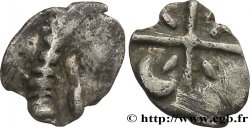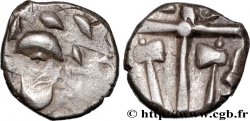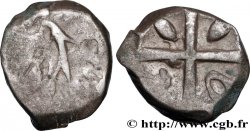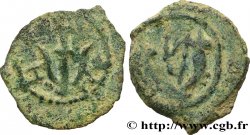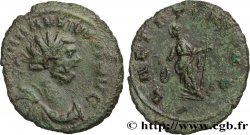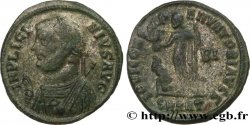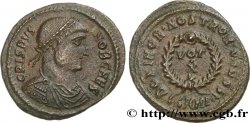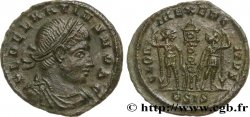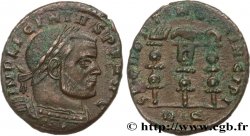E-auction 20-5488 - bga_131947 - GALLIA - SOUTH WESTERN GAUL - VOLCÆ TECTOSAGES (Area of Toulouse) Drachme “à la tête cubiste”, hache au quatrième canton
Чтобы принять участие в торгах, вы должны войти в систему и стать подтвержденным участником аукциона. Войдите, чтобы сделать ставку. Ваш аккаунт будет подтвержден в течение 48 часов. Не ждите до закрытия торгов, чтобы зарегистрироваться.Сделав ставку на данный товар, вы вступаете в юридическое соглашение на покупку выбранного товара и нажатием кнопки «Сделать ставку» подтверждаете принятие вами условий интернет-аукционов cgb.fr.
Ставка может бить сделана только в полном эквиваленте евро. Торги закроются согласно времени, указанному в описании товара, все ставки, сделанные после закрытия торгов, учитываться не будут. Не следует откладывать предложение вашей ставки до последнего момента, так как система может не успеть обработать вашу заявку, и ваша ставка не будет принята. Более детальную информацию вы найдёте здесь: FAQ по интернет-аукционам.
БЕСПЛАТНО.
БЕСПЛАТНО.
| Оценить : | 145 € |
| Цена : | 37 € |
| Максимальная предлагаемая цена : | 45 € |
| Конец торгов : | 02 September 2013 15:16:00 |
| Участников : | 6 Участников |
Тип Drachme “à la tête cubiste”, hache au quatrième canton
Дата: Ier siècle avant J.-C.
Металл: silver
Диаметр: 14,5 mm
Ориентация осей монеты: 5 h.
Вес: 2,88 g.
Редкость: R2
Комментарии о состоянии
Flan régulier, de forme ovale. Très bon centrage au droit et au revers, mais coin de croit usé ou frappe molle et le premier canton du revers est hors flan. Fine patine grise
Ссылки в каталоге: :
Лицевая сторона
Аверс: легенда: ANÉPIGRAPHE.
Аверс: описание: Tête stylisée à gauche ; calotte frontale hémisphérique proéminente se terminant à sa base par un trait figurant le nez ; joue massive formant avec la mâchoire un bloc rectangulaire dont la seule saille est le menton ; oreille arrondie et pointée, au centre d'une chevelure abondante et ovoïde au sommet et en mèches parallèles à l'arrière ; deux dauphins opposés devant la bouche.
Обратная сторона
Реверс: легенда: ANÉPIGRAPHE.
Реверс: Описание: Croix formée de quatre cantons ornés chacun d'une lunule : balle de fronde aux 2e et 3e cantons, un pendant en ellipse au 1er et une hache au 4e canton.
Комментарий
La série VI est représentée dans le Savès par un seul exemplaire, avec la hache au quatrième canton. Cette variété pourrait, à première vue, être confondue avec les drachmes aux haches affrontées quand le deuxième canton est hors flan, mais le type de hache est différent ! Il n'y a que cinq monnaies publiées de ce type ; une provenant du trésor du Causé, une dans le trésor de Saint-Etienne-de-la-Lande, deux trouvées à Vieille Toulouse et une conservée à Londres.
Series VI is represented in the Savès by a single example, with the axe in the fourth canton. This variety could, at first glance, be confused with the drachmas with confronted axes when the second canton is off-flan, but the type of axe is different! There are only five published coins of this type; one from the treasure of Causé, one in the treasure of Saint-Etienne-de-la-Lande, two found in Vieille Toulouse and one preserved in London
Series VI is represented in the Savès by a single example, with the axe in the fourth canton. This variety could, at first glance, be confused with the drachmas with confronted axes when the second canton is off-flan, but the type of axe is different! There are only five published coins of this type; one from the treasure of Causé, one in the treasure of Saint-Etienne-de-la-Lande, two found in Vieille Toulouse and one preserved in London







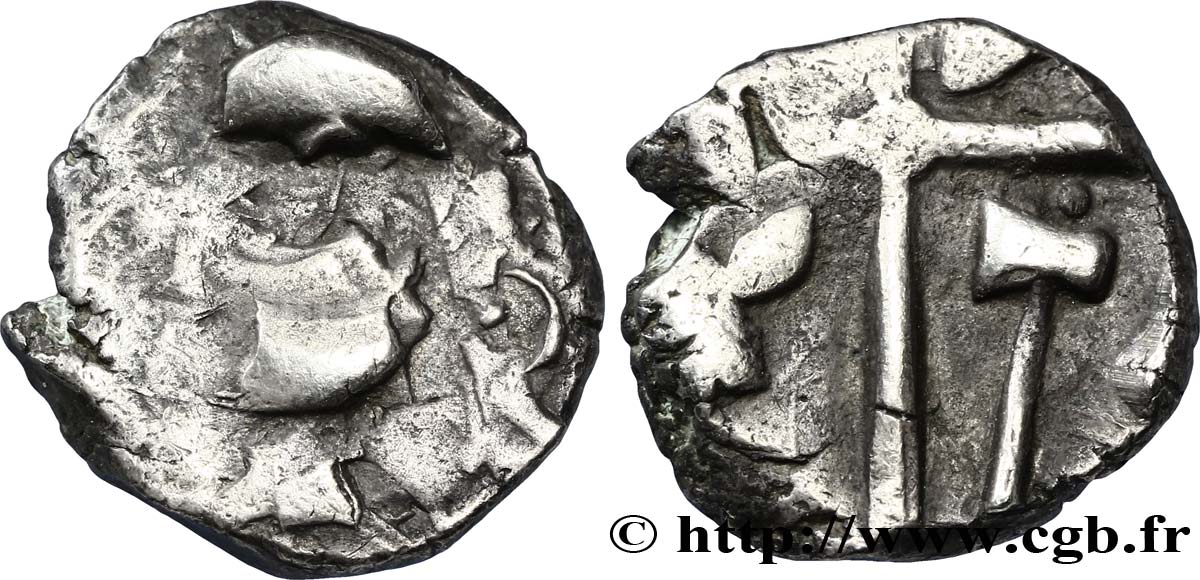
 Cообщить об ошибке
Cообщить об ошибке Распечатать страницу
Распечатать страницу Отправить мой выбор
Отправить мой выбор Задать вопрос
Задать вопрос Consign / sell
Consign / sell
 Информация
Информация